Original text: Validator Health Report: October 2023
Author: Solana Foundation
Compiled by: Odaily How about
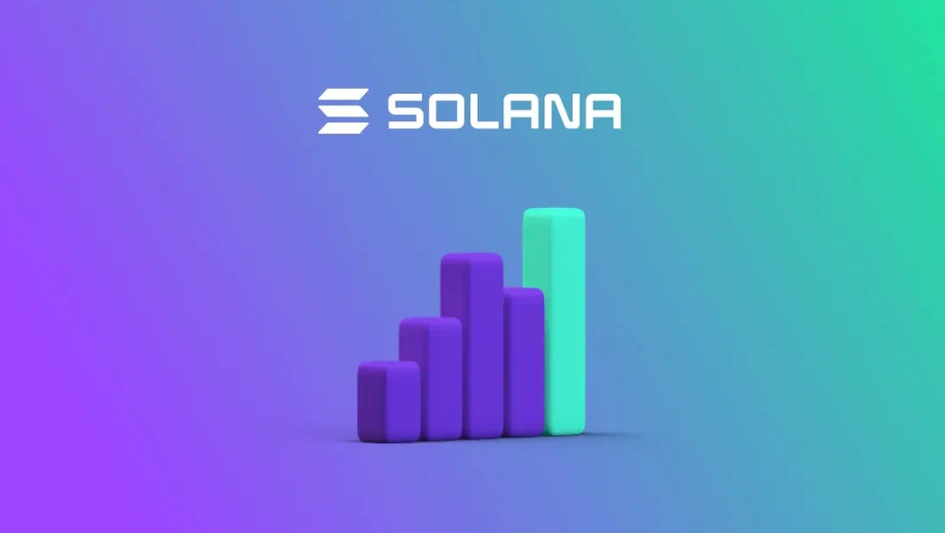
Recently, the Solana Foundation released the Verifier Health Report.
The report shows that the Solana validator network is continuing to grow, as measured by metrics such as node count, Nakamoto coefficient, and client diversity. The health of the validator network is an ongoing focus of the Solana Foundation, which provides tools and education to help global validators and stake holders participate in the security of the network. In addition, the foundation encourages community participation and contributions.
Solana’s validator network participation has increased significantly. The community organizes regular conference calls and e-meetings to facilitate communication and share best practices among validators. In addition, the foundation plans to host Block 0 conferences in the future to further strengthen community connections.
The Solana network has developed multiple validator clients, including Solana Labs, Jito Labs, Firedancer, Sig, and lightweight clients. Client diversity is critical to the health and decentralization of the network, mitigating the risk of single points of failure and increasing network resilience.
The Nakamoto coefficient is an important indicator of network security. Solanas current Nakamoto coefficient is 31, but the foundation still hopes to further increase this number to enhance the decentralization of the network.
In terms of Solanas stake distribution, the network is geographically evenly distributed, with no one country having absolute dominance. The Foundation is closely monitoring the distribution of interests and taking action to increase geographic diversity.
The following is the original text of the report, compiled by Odaily.
Overview
The Solana validator network continues to grow and is measured by metrics such as number of nodes, N distribution, and diversity. Notably, since the last validator health report: Solana has made rapid progress as a multi-client network, with over 31% of stake running through Jito Labs. Additionally, two additional validator clients are in development, a significant increase from 0% a year ago. The network achieved 100% uptime. Various new software upgrade procedures have been implemented as of February 26, 2023, and the network has not experienced any performance degradation since then. As of September 6, 2023, Solana remains one of the largest PoS networks in the world, with a large number of nodes and wide distribution, as measured by Nakamoto coefficient and validator software clients.
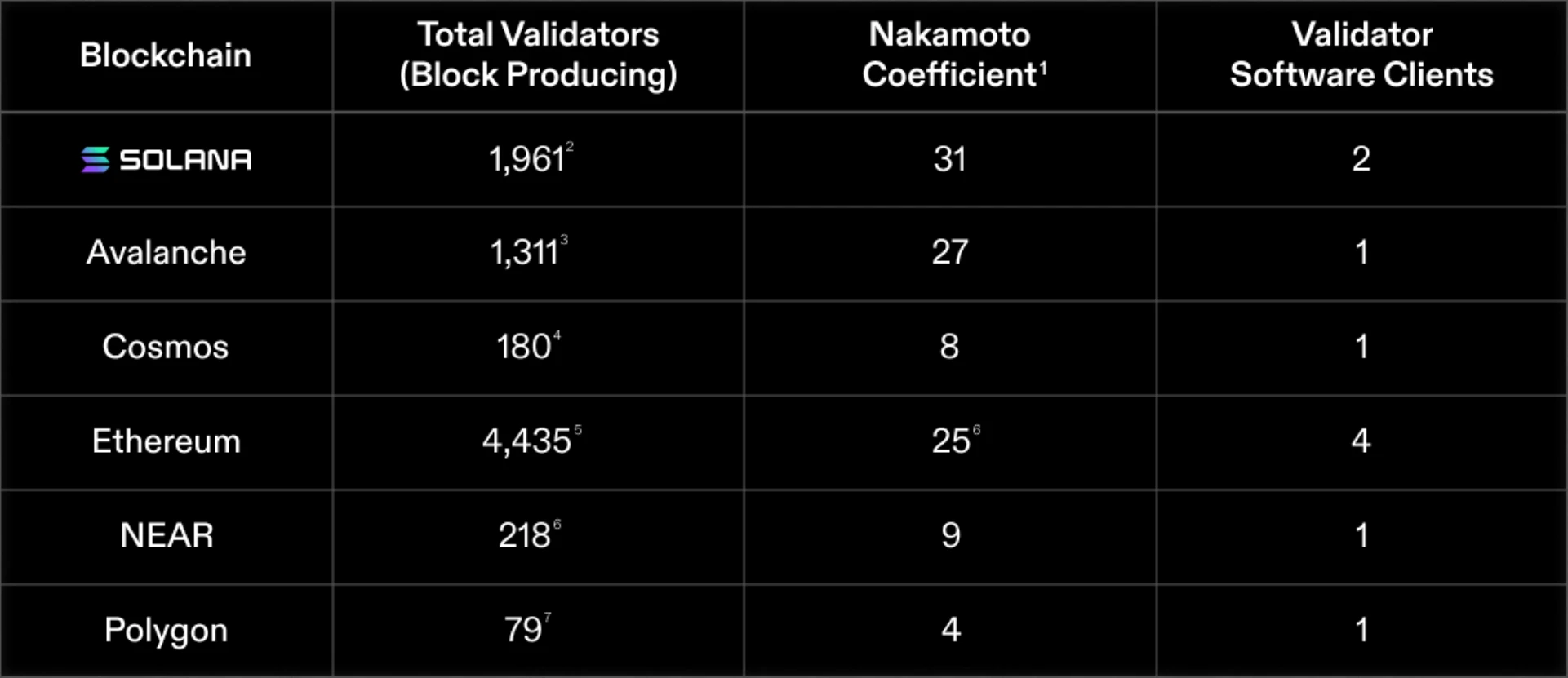
The Solana Foundation has also noticed a significant increase in validator network participation in recent months. While difficult to measure with hard data, some indicators of validator community engagement include:
Regular community-led validator calls: Starting in March 2023, the validator ecosystem will begin planning and convening regular calls to allow the validator community to share notes and best practices.
Block 0 Conference: The validator community will host the first Block 0 conference in Amsterdam on October 30, 2023. This is an entirely community-organized event designed to discuss the growth of the Solana network and strengthen social connections.
The Solana mainnet beta launched in March 2020 and has made significant progress in three and a half years. During this time, the ecosystem has grown significantly. The Solana Foundation strives for rigor and reason when assessing the health of the network and improving its resilience and opportunities, and encourages the community to share their ideas.
Core client development
In previous validator health reports, the Foundation discussed changes in thinking about the best ways to measure and evaluate network health. In particular, the Foundation has recently spent a lot of effort strengthening validator network health at the software level. In this regard, the Foundation focuses on encouraging the development of new software clients and strengthening the network of core contributing developers from multiple organizations.
A validator is a computer running the Solana Validator Client, which is the operating system of the Solana network. In any blockchain network, having multiple software clients is critical to the resilience and decentralization of the network, helping to ensure that there is no single point of failure for the network software. One of the most important wins for the ecosystem is Solana becoming a multi-client network, meaning validators can choose to run different clients.
Solanas current situation
There are currently four different validator client implementations under active development, built on top of three separate code bases. Notably, Jito Labs’ client is used by more than 31% of Solana validators, up from 16% in March 2023 (the last validator health report) and up from 16% in August 2022. It has been 0% since the client first launched on mainnet.


Diversity of validator clients is critical to the long-term health and operation of the network. With multiple validator clients, the risk of bugs or harmful code present in a single client can be mitigated by other independent clients that are more likely not to have the same bugs or malware attacks, thereby reducing the overall Possibility of network outage.
The first validator client on Solana was originally developed by Solana Labs. Since then, there have been several independent efforts to create additional full or lightweight validator clients on the Solana network.
Jito Labs: In August 2022, Jito Labs released the second validator client for the Solana mainnet. This is a forked version based on Solana Labs code, maintained, modified and deployed by Jito Labs. However, since this is a fork of an existing standalone build, bugs in the Solana Labs client are likely present in this client as well.
Firedancer: Also in August 2022, Jump Crypto announced plans to build a new validator client on Solana. This validator client was developed from the ground up and features significant performance improvements. In a test environment, Firedancer processed up to a million transactions per second (for comparison, the original Solana Labs client processed approximately 55,000 transactions per second in a similar test environment).
Sig: In July 2023, Syndica announced that it was developing Sig, a Solana network validator client written in the Zig programming language. In September 2023, Syndicas verifier team released the initial implementation of Sig, including the implementation of the Gossip protocol.
Lightweight clients (such as TinyDancer): In addition to these four validator clients, TinyDancer is a lightweight client for Solana that is under active development. TinyDancer does not participate in the block construction and state maintenance of blockchain consensus, but instead enables users to more easily verify without having to run a full node themselves.
Total number of validators
Blockchains with more validators are generally more resilient. When users execute contracts on the blockchain, they need to be confident that their transactions will be recorded. Ideally, every transaction added to the blockchain will be recorded by every validator on that chain, which is why having more validators is important; a large and diverse number of validators can protect against things like data center outages. The impact of a catastrophic event like electricity.
There are two types of validators: Consensus Nodes: Consensus nodes play a central role in the operation of the network and provide two basic functions:
Create and propose new blocks to other nodes in the network
Vote on the validity of new blocks proposed by other nodes.
RPC Node: Remote Procedure Call (RPC) nodes are the interface between applications and the Solana infrastructure. These nodes are similar to consensus nodes and independently validate all new blocks and network changes, but they do not vote.
Solana’s current situation:
In March 2023, the total number of consensus nodes dropped from approximately 2,200 to approximately 1,700. This drop is due to a large amount of staking being reallocated to nodes that charge 100% commission. Stakeholders became aware of the problem and reallocated their delegation to more active validators. After this decline, the number of consensus nodes gradually and steadily increased, reaching a total of 1961 consensus nodes and 2874 validator nodes as of September 13.
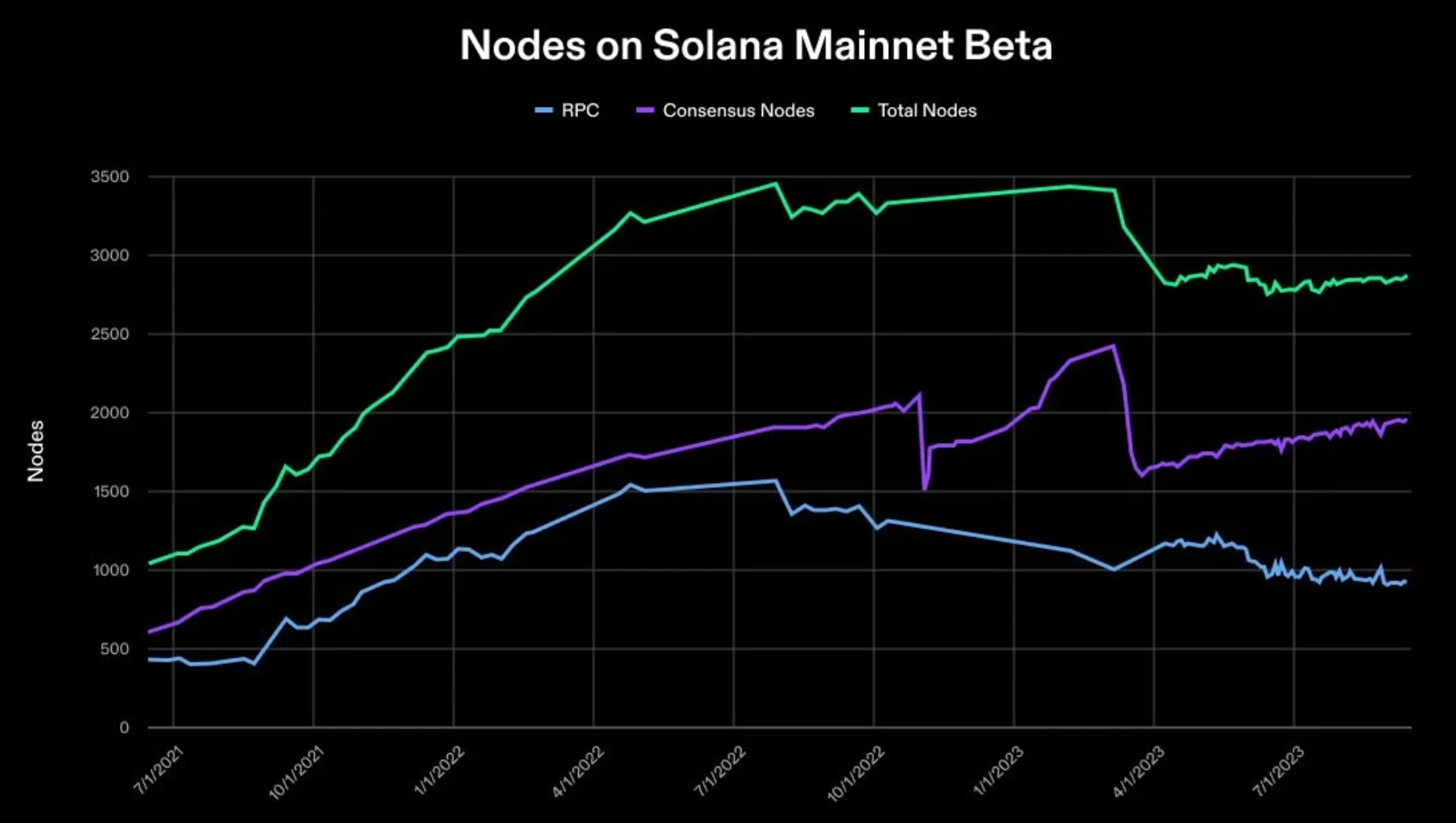
Solana’s node count is definitely higher relative to other proof-of-stake blockchains. The foundation expects to make adjustments to its plans in the coming months to encourage quality, not just quantity, of nodes.
What constitutes a high quality validator is subjective? Node uptime, hardware performance, service levels in the event of user issues, and how active the validator operator is within the broader validator community. The Foundation will encourage validators to meet these standards and will share and launch these opportunities with the community over the coming months.
Nakamoto coefficient of voting power
The Nakamoto coefficient of voting power is defined as the minimum number of nodes in the network that need to be compromised to enforce censorship of blocks or to halt consensus, thereby preventing some or all new blocks (and the transactions within them) from being confirmed. In most proof-of-stake networks, this is the minimum percentage of voting power required to represent at least 33.4% of the nodes.
When the stake distribution is highly concentrated, a small number of validators may represent 33.4% (a very small portion) of the total number of delegates. In a more decentralized distribution of stake and consensus power, this set is larger, making it difficult for businesses, bad actors, or other entities to manipulate the blockchain through censorship.
Solana’s current situation:
In the September 6, 2023 survey, Solanas Nakamoto coefficient was 31. This means that a minimum of 31 validators are required to collude (as of March 2023) for network censorship. The Nakamoto coefficient is the same as the result in the last validator health report, which was also 31.
Solanas Nakamoto coefficient increased steadily from its launch in March 2020, continued through September 2022, and remained relatively stable after that. A Nakamoto coefficient of 31 is powerful. Although the Foundation hopes that this number will increase over time, numerical growth cannot be used as a leading indicator of network decentralization because the Solana network is viewed from the perspective of equity distribution.
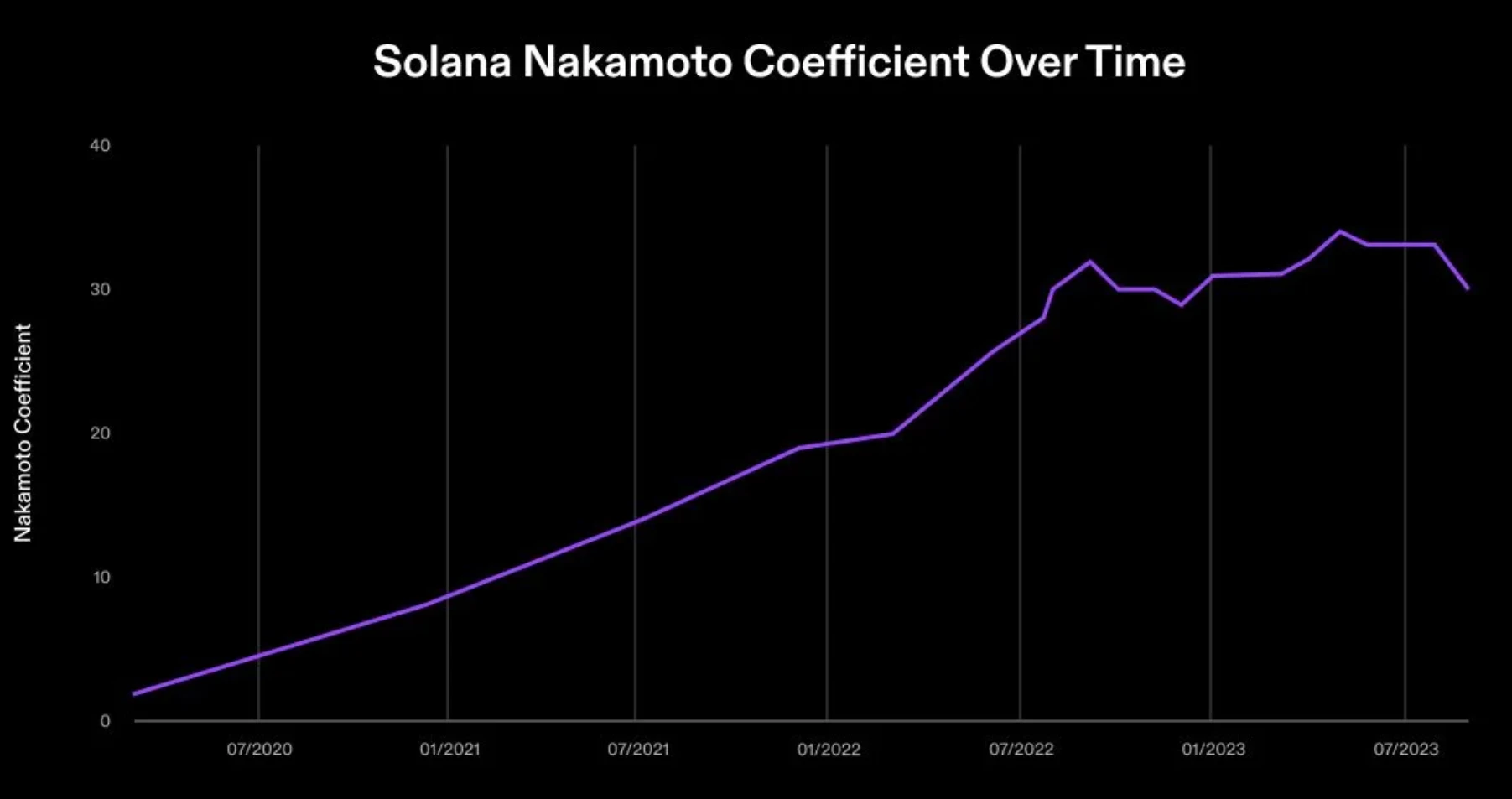
Listed below are the Nakamoto coefficients for some other proof-of-stake blockchains for benchmarking purposes:

Even a large, highly distributed network with multiple software clients is susceptible to several external factors that can affect a blockchains resiliency. These factors are discussed in the next and final section.
distributed
Nakamoto coefficient and client diversity are key metrics, but they fail to capture the human element involved in running a blockchain. Few appreciate the role of external factors such as geopolitics, natural disasters, and corporate incentives when it comes to validator network health.
In this final installment, we’ll look at the resiliency of the Solana network from the perspective of several external factors and how they might impact a proof-of-stake network like Solana.
Equity distribution of data center providers
Anyone can run a Solana node. Since the Solana protocol requires high-performance hardware, validator operators typically rent server space from third-party data centers to run their nodes. This is not unusual; most computing power on blockchains is done on servers in large data centers owned by third parties.
The risk of using a third-party data center to run validator nodes means that the owner of the data center has disproportionate power over the operation of the blockchain. To minimize the risk that one company could harm the chain, stakes should be distributed relatively evenly among the private companies renting server space.
This risk emerged in November 2022, when server provider Hetzner blocked Solana nodes. It is worth noting that the network continued to operate during this period. This equates to a 20% attack on the network and demonstrates why distributing equity across multiple server providers is so important.
Solana’s current situation:
Data center providers often operate multiple data centers and autonomous system numbers (ASNs). The data below is segmented by ASN of major data centers based on publicly available data.
An Autonomous System (AS) is a network of servers with a single routing number. Different autonomous systems are identified by unique ASNs. Depending on how the internal network or routing is configured, an autonomous system can span multiple physical locations in different geographic locations.
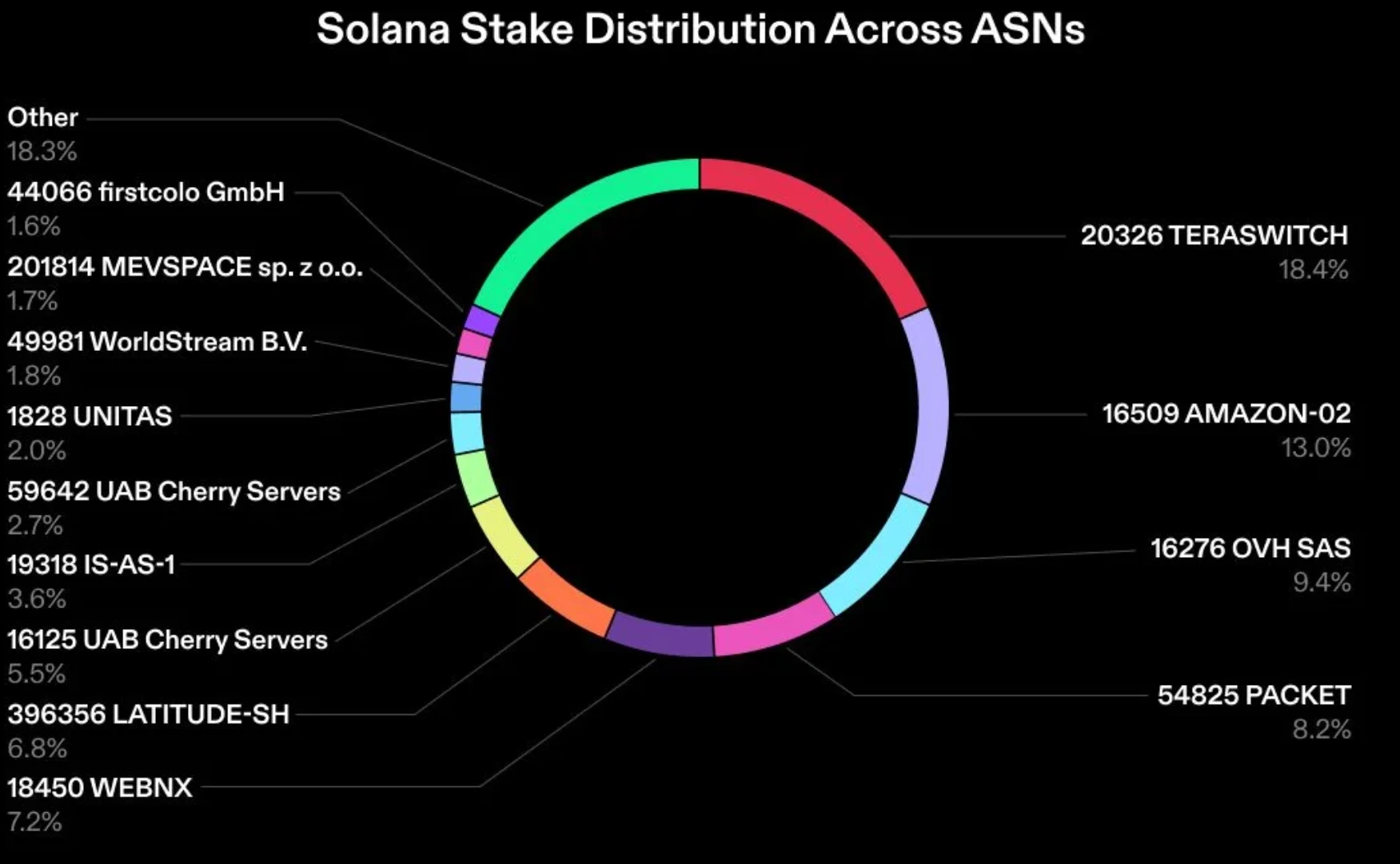
Solanas stake is relatively distributed among autonomous systems (ASNs), with no single autonomous system hosting close to 33.3% of active stake. Currently, it would take at least three data centers colluding to combine a stake of more than 33.3% and halt the network.
Distribution of interests by geographical area
No matter what events occur in one part of the world, a globally resilient blockchain must continue to operate. Consider the following situation:
A government attacks the underwater fiber optic cables that carry the internet, causing internet outages across the region. A globally resilient blockchain must be able to continue operating regardless of events in the region.
An authoritarian regime pursues a dissident, and if the regime chooses to shut down a blockchain server operating within the country, the dissident must be confident that she can access the funds.
Natural disasters disrupt all nodes in a specific area. No matter where in the world a blockchain is used, users still need to be confident that the chain will continue to function even if many validators unexpectedly go offline.
In these cases, one still needs to feel confident in the continued operation of the blockchain, even if many validators unexpectedly go offline.
Solana’s current situation:
Below is a snapshot of the network’s geographical distribution, organized according to each country’s percentage of stake.

The network is evenly distributed geographically, with no single country holding 33.3% of active interest, although recent gains in the United States suggest they may eventually reach that percentage. Notably, the total active interest in the United States and Canada is 34.3%. Here the percentage of equity by country differs significantly from the absolute number of data centers in each country.
Equity through the United States increased significantly, to 29.2% from 23.5% in the last report. The Foundation is working to address this issue, such as by closely monitoring this change, assisting stake pools in optimizing decentralization, and taking action to adjust their scoring algorithms to account for geography.
Looking to the future
The Solana Foundation continues to work to improve the health of the validator network by providing tools and education to validators and stake holders around the world, encouraging community members to become thoughtful participants in network security. The foundations focus has expanded to not just focus on community growth and Nakamoto coefficient, but also on improving the health of the network in hard-to-quantify ways.
The Solana validator community has launched several new initiatives to improve the health of the network, including organizing Block 0 (an electronic meeting of validators), community-led validator convening, and new governance practices.
In the coming months, the Foundation will support community efforts through its own initiatives aimed at improving the health of the validator network, including changes to the Solana Foundation’s Delanation program to help validators become more self-sufficient and sustainable, and strengthen the community orientation of the network.










